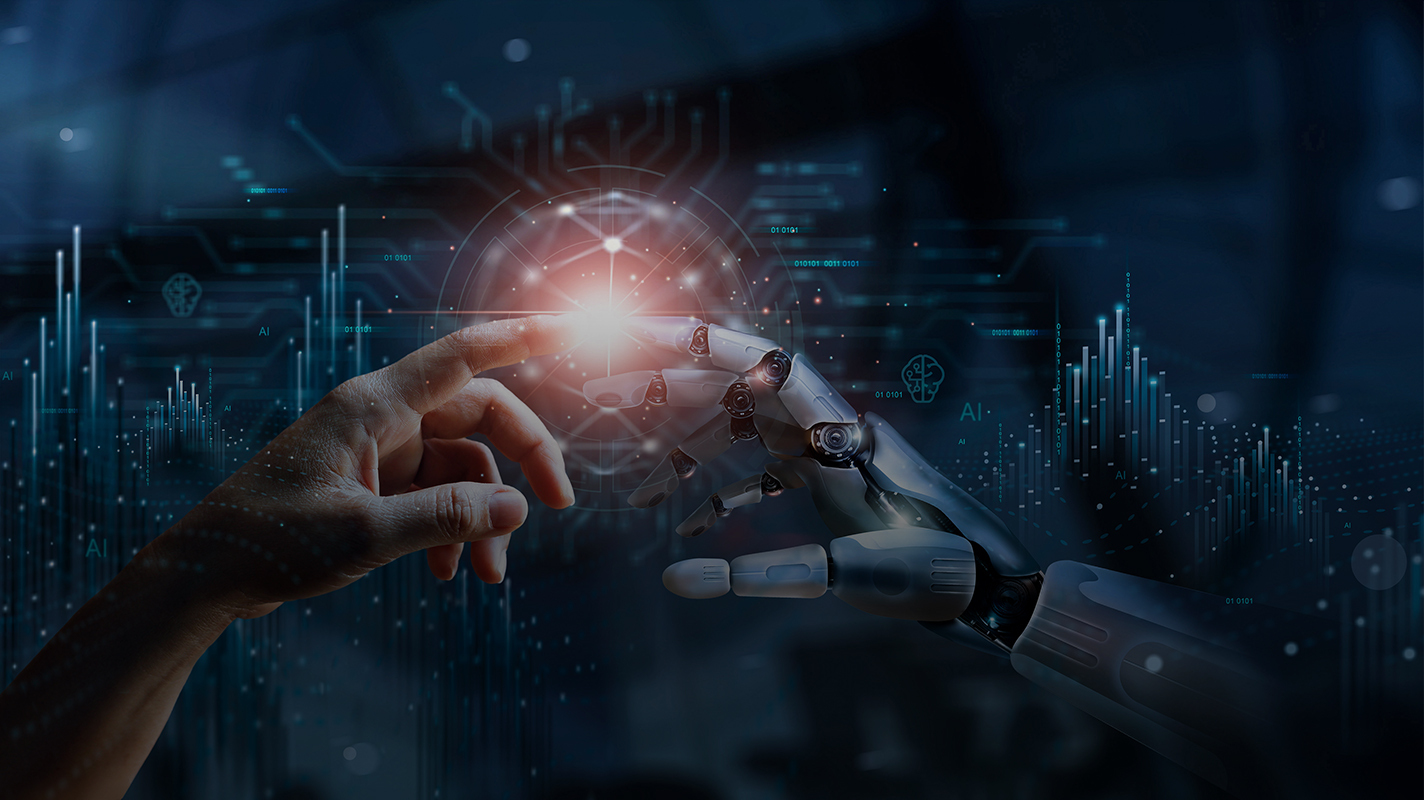By Scott Cullather

Our engagement with technology has always existed as a love-hate relationship. We crave deeply for its conveniences and toolbox enhancing capabilities, yet fear its potential for dominance, and Artificial Intelligence (AI) is no different.
The depiction of AI as a human threat has persisted through decades of global cultural consciousness as evidenced across HAL 9000 in Stanley Kubrick’s “2001: A Space Odyssey” (1968), the terminator in Arnold Schwarzenegger’s “Terminator” (1984), Agent Smith in “The Matrix” (1999), Steven Spielberg’s touching saga “Artificial Intelligence” (2001), and the good-robot-gone-bad viral sensation “M3gan” (2023).
While this trepidation is not unfounded, a thrilling new frontier awaits enterprises and human creativity, as Generative AI shapes the contours of industries, experiences, and our existence.
Over the last few decades, humans have been creating tales that transcend boundaries and establish connections with communities around the world. We stand on the cusp of a transformative epoch, where AI-infused strategies will redefine and amplify our means of engagement, storytelling, and how we connect to one another.
AI’s evolution echoes the human (and digital) quest for connectivity. Just as we’ve journeyed from Web1, through Web2, into Web3 and MaaS (Metaverse-as-a-Service), AI has evolved from elementary algorithms into refined, learning entities that comprehend, uncannily mimic, and anticipate human behavior. AI is molting, transcending its birthplace, and primed to ignite new territories in community building, while raising new nuances and societal challenges.
Establishing a healthy and balanced exchange with learning models is paramount.
Think of AI models like ChatGPT, NotionAI, Midjourney, as tools for achieving the ultimate impact, across daily tasks and more complex projects and ideations. Generative AI technology is a layer in the tech stack of efficiency to be an extension of your organizations’ team, rather than a complete substitute for human acuity.
These language models should be leveraged as our encyclopedic comrades in the quest for developing creative and compelling narratives to be applied across industries, global markets, and even how humans interact.

Generations of Sony’s Aritifical Intelligence Dog Robots ‘Aibo’
Take Sony’s AIBO, the entertainment robot dog that broke all records for the number of robots sold (130,000) in the shortest period (1999). AIBO is an autonomous home entertainment robot with artificial intelligence. Its behavior simulates a dogs in its ability to walk and play, with built‐in functions for emotions, instincts, learning and growth — the more you interact with it the more it learns and reacts to you.
Yet AIBO was not intended by Sony to be a dog substitute, but to further the man‐robot interaction, a cunning way to showcase their commitment to technology, innovation, and connection.
We are the human touchpoint, the empathetic connector who synthesizes data and translates this data into impact and meaning.
Our interaction with technology tends to swing between infatuation and apprehension. The allure of convenience starkly contrasts the fear of dominance. While embracing the AI renaissance and cultivating balanced, mindful interactions, these intelligent systems will unleash human and industrial potential, and the adverse effects will open a new pandora’s box.
The recent open letter by Future of Life Institute featuring data scientists, business luminaries, and tech leaders from Sam Altman (OpenAI CEO) to Elon Musk (Owner of Twitter, Tesla CEO), urging us to “pause giant AI experiments,” reinforces this polarity. The institute postulates that “mitigating the risk of extinction from AI should be a global priority,” echoing concerns about potential for grave disasters, from misinformation campaigns, to pandemics, and even warfare. Additionally, bias in AI decision-making poses a significant consideration, as AI models can inadvertently inherit biases from the data they were trained on.
The pitfalls of relying on AI without proper supervision and verification processes, is evidenced across a plethora of instances, including at the intersection of the law when U.S. lawyers Peter LoDuca and Steven A. Schwartz used an AI tool for case research which resulted in completely fabricated legal references. In a lawsuit against Colombian airline Avianca, they cited past cases that were nonexistent. After District Judge P. Kevin Castel highlighted the fabricated citations, the lawyers admitted to having used OpenAI’s platform, ChatGPT, for sourcing legal precedents.
The confession revealed a vital shortcoming — the failure to validate the data received from AI tools, leading ChatGPT to add a new misinformation disclaimer to the platform.

Tom Cruise in “Minority Report” (2022) leveraging AI to solve crime and eradicate lawlessness.
Looking towards the future, AI continues to grow its ability to code more independently. And while not a sentient being, our global outpour of prompts is building a larger-than-life ecosystem of information and data, postulating risks that could lead to more extreme AI-orchestrated scenarios, ranging from systematic takeovers of critical operating systems at hospitals, airports, banks, opening the door for a world of peril.
The global AI adoption rate is currently 35%, a four-point increase from 2021, and it’s expected to grow more significantly with startups and tech giants integrating AI into more systems and cornerstones of everyday life.
The estimated revenue forecast for AI in 2022 stands at $196 billion and is projected to skyrocket to $1.8 trillion by 2030. Although leading companies like chip-manufacturer NVIDIA, are seeing their AI strategies yield unprecedented market valuations, with NVDIDA crossing the $1 trillion mark.

In 2023, there will be an estimated 8 billion AI-powered voice assistants. For example, Amazon’s Alexa alone boasts about 66,000 inventory skills (accessible in the US).
Across macro markets and economics, AI usage statistics forecast that the US GDP will grow by over $15 billion by 2030 thanks to AI. It’s also predicted that by 2030, about 26.1% of China’s GDP will also come from AI. Other economies will also benefit from AI, with North America at 14.5%, followed closely by the United Arab Emirates at 13.5%.
The AI landscape is as promising as it is perilous and evolving by the minute. Its responsible and balanced utilization will lead to unprecedented growth and innovation, but if left unchecked, could pose fatal threats to the fabric of society and the global human race.

